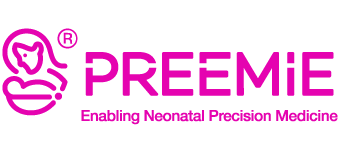Challenges and opportunities in managing infant feeding in NICUs

Whoever had the chance to access and move around in a Neonatal Intensive Care Unit knows how precious and extremely difficult the work of neonatologists and nurses is. Those tiny little babies are there, suffering, crying, their lives hanging by a thread, and your heart constricts at their sight, making you feel powerless. But doctors out there are not, and they fight every day to give those babies the chance to survive, to defeat prematurity and other diseases, to grow fast and thrive.
In such an emergency situation, whatever can be made which facilitates and supports their work, is not simply just an improvement into their daily workflow, but can have a huge clinical impact; it means that they have more time to focus on the care of their infants and on clinical decisions.
Therefore, more than in any other healthcare application, whatever improvement in efficiency of the workflow, support in data collection, visualization and analysis, and in healthcare delivery, can turn into improving clinical outcomes and even saving lives.
Since the very start of designing the Preemie System, we interacted with several neonatologists, paediatric dietitians, and nurses, and analyzed with them how our solution could improve their work, leveraging the possibility of rapid human milk analysis as well as the power that digitalization can offer in easing data collection, processing and analysis.
We want to point out some examples of how a fully digital approach can add value in managing infant feeding, not only by saving time (and money, of course), but also supporting healthcare professionals in their clinical decision-making process.
High level of flexibility to meet specific requirements
When it comes to feeding preterm infants, a clinical decision has to be made taking into account several factors, including the clinical history of the infant, the growth rate over time, and the amount of feeding administered over time.
Many other factors play a role which are dependent on the peculiar approach to fortification that the NICU has put in place in its protocol. It’s not just the approach being based on either standard, adjusted or targeted fortification, but also boundary conditions such as the guidelines with reference ranges for the fluid and macronutrients intake, or the selection of specific fortifiers which are being used in the hospital.
In order to track in a granular way what is actually being administered to the infant, all this data has to be taken into account, and a flexible digital system can allow any kind of customization in this sense. Not only the doctor could select customized guidelines for specific subgroups of infants, as well as use different fortifiers with all reference data being stored automatically. Customization can also span over more subtle features, where research is always ongoing and there is still lack of official guidelines.

An example is the estimated level of absorption of the macronutrients administered through enteral nutrition. By means of customizable settings to define such levels, based on the latest research and on neonatologists’ experience, doctors can make the most out of data when prescribing and monitoring the feeding, without the need to make any calculation. The system can track automatically how much milk and fortifiers have been prescribed, the amount of macronutrients that are going to be delivered, how much out of them it is estimated that the infant will actually absorb, as well as the actual amount of milk that the infant got against the milk prescribed.
Provide data insights to support clinical decisions
The amount of data collected is of high value when doctors make feeding decisions. Despite the need for standard protocols for properly managing infants’ health, healthcare delivery is more and more going towards a personalized approach, which ensures more effective clinical outcomes. Feeding management makes no exception, and such personalization has to firmly rely on key indicators based on data collection and analysis. Digital tools have the power to provide doctors with such indicators at a glance, through meaningful and easy-to-read visualizations. They enable us to compare growth and feeding over the last days, how much nutrients have been actually administered to the infant against the prescription, which fortifiers are providing the best outcomes, and therefore support doctors to make more informed decisions based on the infant’s health status.
Here is where technological innovation can play a crucial role, allowing specialists to collect data which makes personalization truly possible. This is the case of the Preemie Sensor, which allows doctors to analyse human milk and take into account the actual macronutrients content when calculating the fortification and the overall nutrition to be administered.
This is a fundamental step towards personalized healthcare, since now it is possible to exert accurate control over what is being administered, without relying on assumptions and average values in milk content.
Automatization, whenever possible
This is mostly about saving time and costs, and at the same time preventing the potential occurrence of human errors. Digital tools shall replace paper-based or spreadsheet systems, which are time-consuming and prone to errors, and support professionals in both basic and more complex calculations.
As an example, based on the guidelines selected and the weight of the infant, the system can immediately indicate the suggested range of fluid and macronutrient intake, to be considered as reference values by the doctor. More importantly, based on the real values of the milk content and the fortifiers used, the system can easily calculate and display the amount of macronutrients provided to the infant, thus enabling the doctor to tweak the target values of each macronutrient, and provide in output the related amount of fortifiers to be added. The system is thus able to support the users in each operation during the entire workflow, streamlining the calculation and the prescription process, and moreover making it possible to perform each operation anytime and anywhere.
As an example, the milk can be analysed in the human milk bank, and data are automatically stored in the system. Few hours later, the doctor can use the very same values to calculate the fortification and make the prescription in the office, and the prescription is then available in real time to the nurse at the NICU for her to actually fortify the milk and administer the prescribed feeding.

Metadata for empowered support
Maybe we are going too far, but every innovation must be inspired by a long-term vision. We know that nothing can replace the competence, sensitivity and experience of medical doctors, and that every innovation in the healthcare sectors shall be thoroughly tested and validated through clinical trials and scientific debate.
But at the same time, we are firmly convinced that the collection and use of big data and the application of disrupting technologies such as Artificial Intelligence can really empower healthcare professionals and support them in clinical decision-making.
Just imagine if doctors could tap into a huge database of clinical records (anonymized, of course), and when taking a decision (be it the choice of a fortifier, the amount to be used, or the amount of milk to be prescribed) display in real-time clinical records of a cohort of infants with a clinical history similar to the patient (e.g. gestational age, growth history, comorbidities), and thus know which choices from other doctors led to the desired outcomes and which did not.
Maybe it’s planning too far ahead, but we believe that such approaches will really revolutionize both research activities and clinical practice in the forthcoming future.
This is a step-by-step process, which involves embracing digital transformation and continuously finding innovative solutions, and we sincerely hope that the Preemie System will contribute to this challenging journey.

